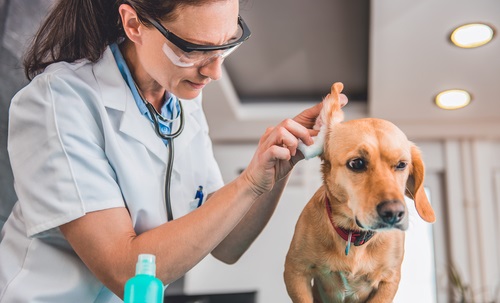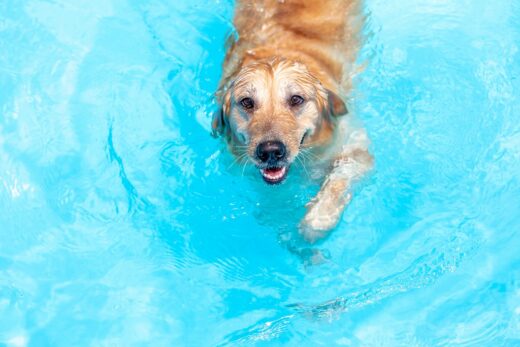A dog’s ears do a lot of important work for his survival – they pick up on any nearby threats or predators, they allow him to listen for companions approaching, and, of course, they can hear a treat bag being rustled no matter where they are. That’s why keeping them healthy and free of debris is as important as grooming his fur or cutting his nails on a regular basis.
If he’s like many dogs, however, he might balk at the idea of even his most trusted human companion touching the inside of his ears. He’s naturally protective of this area, as he is of the other vulnerable areas of his body, like his eyes or paw pads. Getting beyond this protective instinct to help him is a matter of patience and being smart about cleaning methods. Here’s how to clean out dogs’ ear linings to keep them free of parasites, diseases, and plain old dirt.
Why Do Dogs Need Ear Cleaning?
When humans bathe, the way they hold their head in the shower or bath usually rinses the outer ear naturally. As they towel off, most individuals give at least a passing scrub to the back of their ears, as well. In addition, the outside of human ears are open to sunlight and air circulation – two factors that damp, dark-loving bacteria absolutely hate. Even with those benefits, humans still need to do periodic cleaning specifically for their ears in order to remove excess earwax and dead skin.
Now imagine attaching either a cone that funnels dirt and debris directly into the ear canal, or a flap that covers the ear to give bacteria a place to hide. Dog’s ears, while excellent at funnelling sound to their inner ear for better hearing (or smells up to their nose for breeds like the Basset Hound), are also much more susceptible to infections like the candida (yeast) fungus. Regular ear cleaning helps thwart bacteria, parasites, and fungi from moving in and getting comfortable at the expense of the dog’s health and comfort.
When Do Dogs Need Ear Cleaning?
Ideally, a dog’s ears should – and often are – cleaned each time he is groomed by a professional. If his pet parent is taking a DIY approach to canine grooming and bathing, about once a month should suffice unless there’s an underlying issue. This is roughly as often as their nails should be checked and trimmed, which allows for setting up an easy-to-remember schedule for non-fur grooming practices.

Need-based ear cleaning for dogs should, on the other hand, be more immediate. When he has a canine ear infection or parasites, the natural sensitivity of his ears can make the situation absolutely miserable to endure. A dog who is exhibiting any of these signs needs a visit to the vet as soon as possible to receive an appropriate diagnosis and treatment:
- Frequent scratching at or in the ears with his paws, particularly if his paw is going into the ear canal. (Dirty, jagged claws can make this even worse!)
- Head-tilting or a previously unnoticed issue with keeping his balance as he walks
- Redness, discharge, oozing, or crusting coming from the ear area
- Evidence of rashes or parasites, such as canine ear mite crusting or black flea dirt, in the fur around his ears
- Sensitivity or reluctance to allow any contact, even light petting, around his ears
- A sharp whining or pulling away if his ears are touched





